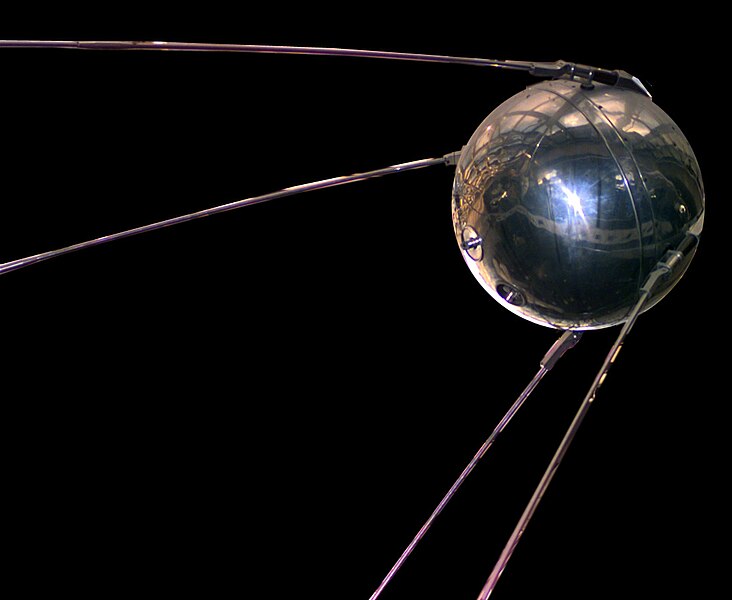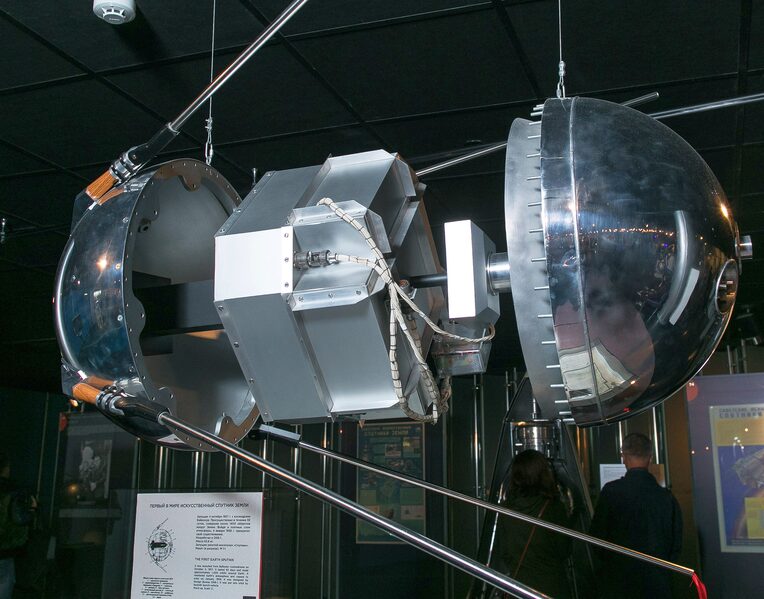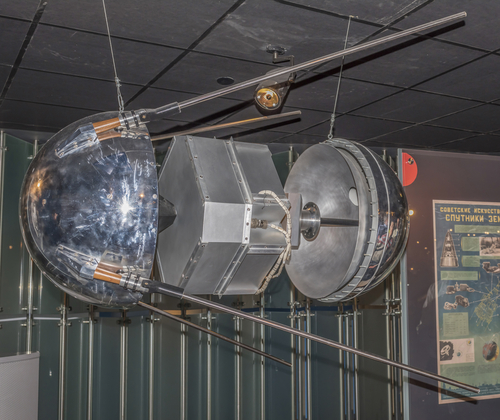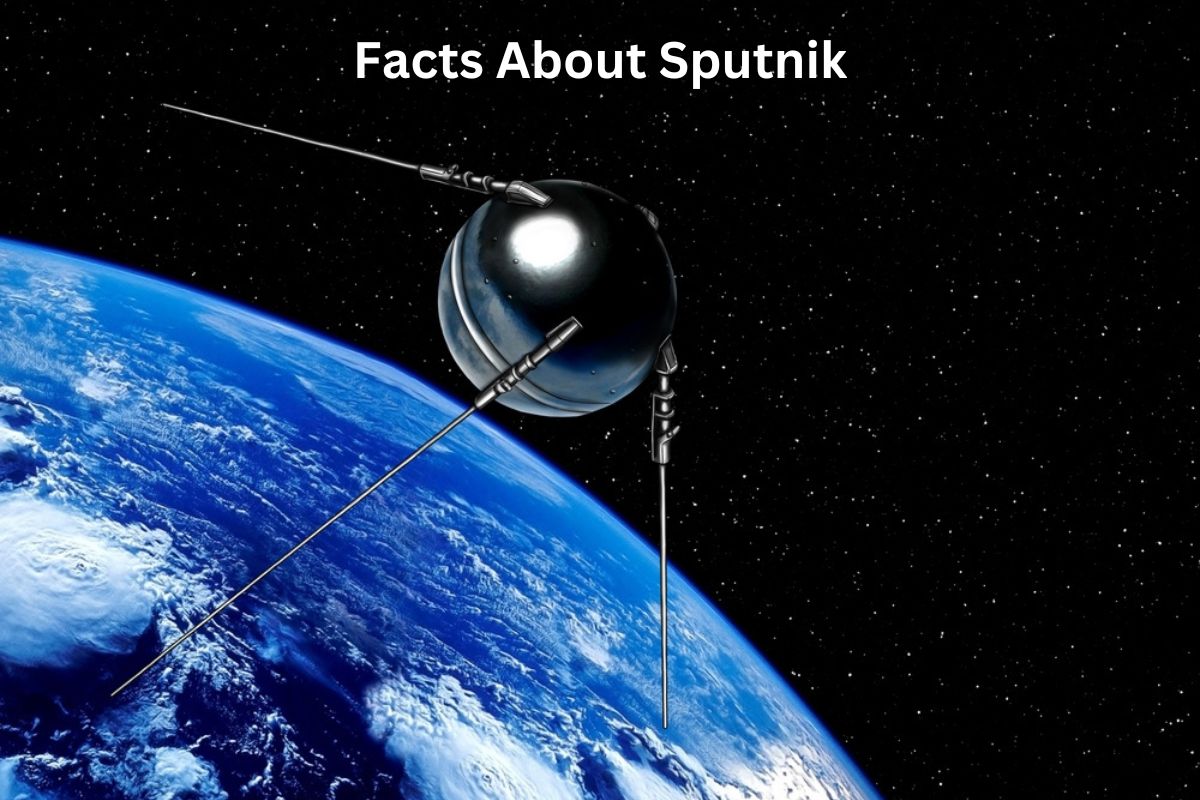Sputnik, which means “satellite” or “companion” in Russian, was a historic milestone in the field of space exploration. Launched by the Soviet Union on October 4, 1957, Sputnik 1 became the world’s first artificial satellite to orbit Earth.
This unassuming spherical object, approximately the size of a beach ball, not only marked the beginning of the space age but also ignited the intense competition of the Space Race between the United States and the Soviet Union.
In this article, we will delve into some key facts that shed light on the significance and impact of this groundbreaking achievement.
Sputnik Facts
1. Launched on October 4, 1957
Sputnik 1 was launched by the Soviet Union on October 4, 1957. This date is significant because it marked the beginning of the space age and represented a major milestone in human history. It was the first time that humans had successfully placed an artificial object into Earth’s orbit.

2. Weighed about 83.6 kilograms
Sputnik 1 was a relatively small satellite with a diameter of about 58 centimeters (23 inches). Despite its small size, it weighed approximately 83.6 kilograms (184 pounds).
Also Read: Facts About Space Exploration
This weight included the satellite’s various components, such as its radio transmitter, batteries, and scientific instruments. The compact size and weight of Sputnik 1 were essential for its successful launch into orbit.
3. Orbited Earth every 96 minutes
Sputnik 1 orbited Earth approximately every 96 minutes. This rapid orbit meant that it circled the planet more than 15 times a day. It traveled at an astonishing speed of about 27,600 kilometers (17,100 miles) per hour, which allowed it to complete an orbit in less than 100 minutes.
Also Read: Apollo Space Program Facts
The satellite’s orbit was highly elliptical, taking it as far as 947 kilometers (588 miles) from Earth and as close as 215 kilometers (134 miles). This orbit provided valuable data about Earth’s upper atmosphere and the effects of space travel on a man-made object.
4. Emitting radio signals at 20.005 MHz
Sputnik 1 emitted radio signals at a frequency of 20.005 MHz, which could be received by radio operators around the world. The constant “beeping” signal from Sputnik 1’s radio transmitter served two purposes.
First, it allowed scientists and engineers to track the satellite’s position and speed, providing valuable data about its orbit. Second, it was a public demonstration of the Soviet Union’s technological prowess and the successful launch of an artificial satellite.
The radio signals transmitted by Sputnik 1 became a symbol of the Space Age and were heard by people around the globe.

5. Designed by Sergei Korolev
Sputnik 1 was designed by Sergei Korolev, a prominent figure in the Soviet space program. Often referred to as the “Chief Designer,” Korolev played a pivotal role in the development of the Soviet space program and was instrumental in the success of Sputnik 1.
His expertise in rocketry and spacecraft design laid the foundation for many subsequent Soviet space missions, including the launch of the first human into space, Yuri Gagarin, in 1961. Korolev’s work had a lasting impact on space exploration.
6. Launched atop an R-7 missile
Sputnik 1 was launched into space atop an R-7 intercontinental ballistic missile. The R-7 rocket, known as the “Semyorka” in Russian, was a powerful and reliable launch vehicle. Its use for launching Sputnik 1 marked a significant achievement in rocket technology.
The same R-7 rocket design was later adapted for human spaceflight, and it carried Yuri Gagarin into orbit, making him the first human in space in 1961. The success of Sputnik 1 and the R-7 rocket marked the Soviet Union as a leader in space exploration during the early years of the Space Race.
7. Mission lasted about 3 months
Sputnik 1 remained in orbit for approximately three months. Over this period, the satellite gradually lost altitude due to atmospheric drag. The lower it descended, the greater the air resistance it encountered, causing it to lose energy and eventually re-enter Earth’s atmosphere.
On January 4, 1958, Sputnik 1 completed its mission when it re-entered the atmosphere and burned up. Its mission duration marked a significant achievement in terms of satellite technology and laid the groundwork for future satellite missions with longer lifespans.

8. Triggered the Space Race
The launch of Sputnik 1 had a profound international impact. It caught the world’s attention and triggered the Space Race, a competitive period of space exploration between the United States and the Soviet Union.
The United States, in particular, felt a sense of urgency to catch up in the field of space exploration, leading to increased investments in science, technology, and education. This era of competition ultimately led to significant advancements in space exploration, including the Apollo moon missions.
9. Sputnik 2 carried the first living creature into space
Following the success of Sputnik 1, the Soviet Union launched Sputnik 2 on November 3, 1957. Sputnik 2 was notable for carrying the first living creature into space, a dog named Laika.
Unfortunately, Laika did not survive the mission, but her journey paved the way for future human spaceflight. Sputnik 2 further demonstrated the Soviet Union’s capability to send a larger payload into space, expanding the possibilities for space exploration.
10. Inspiring future space exploration
Sputnik 1’s legacy is significant in the history of space exploration. It marked the beginning of the space age, inspiring generations of scientists, engineers, and astronauts.
The successful launch of Sputnik 1 demonstrated that humans could send objects into space and opened the door to further exploration of the cosmos.
It led to the establishment of space agencies like NASA in the United States and prompted a global interest in space science and technology. Sputnik 1’s impact on science, technology, and international relations is immeasurable and continues to influence space exploration to this day.
